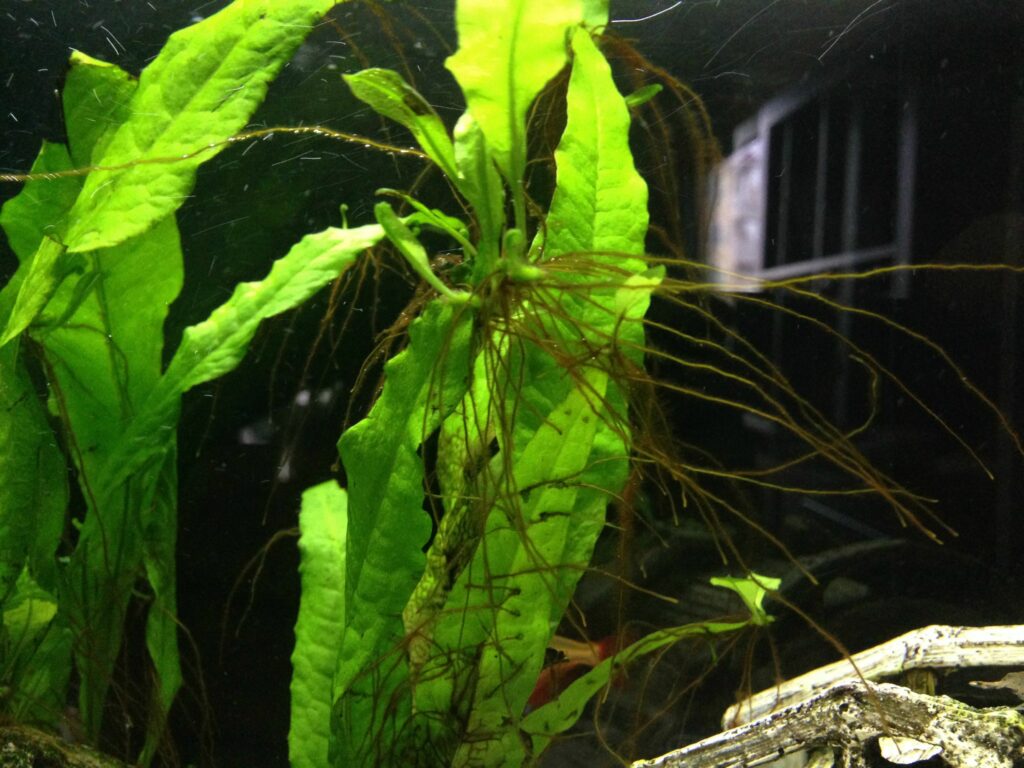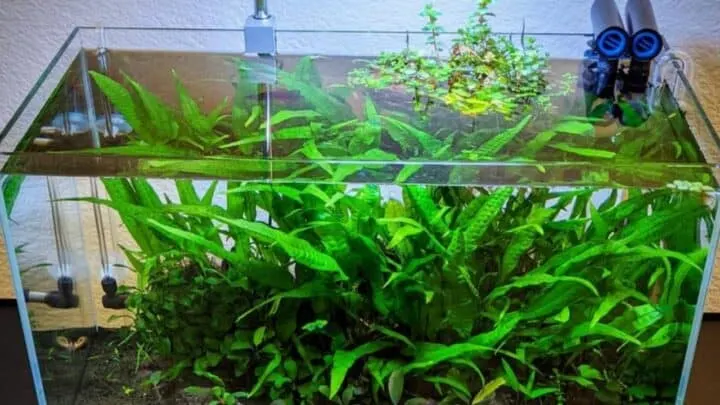Java Ferns are an excellent plant for any beginner fishkeeper. They are extremely hardy and they grow fast. However, sometimes, even a plant as hardy as a Java Fern could have issues that are worrying to you, such as growing roots on leaves.
So, why is your Java Fern growing roots on leaves? This isn’t always a cause for concern since Java Ferns normally propagate this way, but it can be fatal to the mother plant if you don’t deal with it fast enough.
In this article, we’ll talk about the roots that are growing on your Java Fern’s leaves, what it means, and what you can do about it.

Table of Contents
What is growing on my Java Fern?
Like many other plants, many things can grow on your Java Fern. The most common of these are algae, which can be harmful to your plant.
However, sometimes, you may even see strange, brown roots growing on your fern. Don’t panic just yet – these may be just Java Fern roots.
Why is my Java Fern growing roots on leaves?
Java Fern roots are one of the many ways that Java Ferns spread and propagate. In the wild, this is their main method for reproducing.
You can also call these roots ‘anchor roots’ because they’re anchored to the main plant, also known as the mother plant.
These roots, as they grow, will get nutrients from the mother plant. Everything that the plant needs to grow, like nutrients, will be from the leaf where they’re anchored.
However, this is quite taxing to the mother plant. If the Java Fern roots stay on them for too long, they may wither and die. You might see the leaf start shriveling up and becoming brown.
Once this happens, the Java Fern roots, now a young Java Fern plant, will have to find another place to call home.
What can you do with Java Fern roots?
As mentioned above, the brown roots are how Java Ferns reproduce.
The Java Fern roots that you see on the leaves will eventually become new plants. After a while, they will develop their own leaves.
Once they have around 2-3 leaves, you can now remove them from the original Java Fern leaf that they’re attached to. You can then transfer them to a new location and start the growing process all over again.
You can even give them to other aquarium owners if you’d like so that they can have Java Ferns in their setup.
Can Java Fern grow floating?

Java Fern can grow floating, at least for a while. They don’t mind just drifting from one place to another until they find a location where they can attach themselves for good.
Usually, this takes as little as a few days to a week. Once the long roots of a Java Fern catch onto something, it will attach to that immediately.
It does this because Java Ferns are epiphytes. This term refers to non-parasitic plants that have to attach themselves to something in order to thrive.
Due to this, Java Ferns are not picky at all about the surface they attach to. Beginner fishkeepers take advantage of this when making their tank setup.
Some tie their Java Ferns to their aquarium decor, like a rock, a shell, or a piece of driftwood. The best way to do this would be to use a thin thread or even a fishing line.
It takes the Java Fern around a few weeks in order for its roots to become fully attached. Once
How do you know when a Java Fern is dying?
The Java Fern is a plant, first and foremost, so its symptoms will be the same as any other dying plant.
One sign is if your Java Fern’s leaves are becoming brown or yellow. Another is if it’s losing leaves or is no longer growing any new leaves. You may also see pinholes on its leaves, which could suggest a problem, too.
These are signs that your Java Fern may be nutritionally deficient. Perhaps something is suffocating is, as well, like your substrate.
Lastly, if there are a lot of plantlets, such as the ones coming from the long roots that you see on its leaves, it also means that there’s a problem with your Java Fern and it could die if not taken care of.
Tips to care for Java Fern
Of course, you don’t want anything bad to happen to your Java Fern. Here are some tips to take care of it.
- After tying the Java Fern to something, you can just leave it there and let it attach itself.
- Don’t plant the Java Fern under your substrate. It won’t be able to survive. The rhizome should be kept above gravel or sand at all times.
- Avoid excessive lighting in your tank. Java Fern grows best when they’re in the shade. Too much lighting can make their leaves turn brown and wither.
- Use fertilizers to enhance your Java Ferns health.
Interested in more aquarium content? Check out our blog!